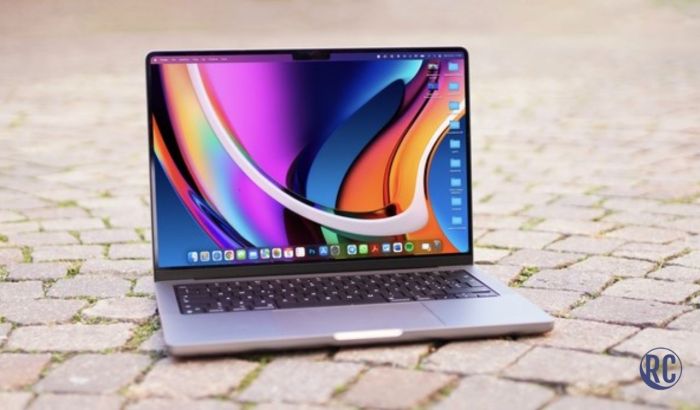Micro-LED Technology: Apple Aiming To Mass Produce Micro Led Displays
Imagine a display that’s brighter, more vibrant, and consumes less power than anything you’ve ever seen. That’s the promise of Micro-LED technology, a revolutionary display technology that’s poised to change the way we experience visual content.
Fundamental Principles
Micro-LED displays are built upon the same basic principles as traditional LEDs, but on a much smaller scale. Each pixel in a Micro-LED display is made up of an individual microscopic LED, typically measuring just a few micrometers in size. These tiny LEDs are arranged in a dense array, creating a high-resolution display with exceptional picture quality.
The light emission mechanism in Micro-LED displays is similar to that of traditional LEDs. When an electric current flows through a semiconductor material, electrons recombine with holes, releasing energy in the form of photons. The color of light emitted depends on the specific semiconductor material used.
Micro-LED technology offers several advantages over traditional LED and OLED displays. These include:
- Higher Brightness: Micro-LEDs can achieve significantly higher brightness levels compared to OLEDs, leading to more vivid and impactful visuals, particularly in brightly lit environments.
- Longer Lifespan: Micro-LEDs are known for their exceptional longevity, offering a significantly longer lifespan than OLEDs, which are susceptible to burn-in over time.
- Improved Energy Efficiency: Due to their smaller size and more efficient light emission, Micro-LEDs consume less power than traditional LEDs and OLEDs, contributing to a more sustainable viewing experience.
- Wider Viewing Angles: Micro-LED displays offer wider viewing angles than OLEDs, ensuring consistent color and brightness across a larger range of perspectives.
- Higher Contrast Ratios: The ability of individual Micro-LEDs to be switched on and off independently results in deep blacks and incredibly high contrast ratios, enhancing the overall visual experience.
Manufacturing Process
The manufacturing process for Micro-LED displays is complex and requires sophisticated equipment and techniques. The process involves several key steps:
- Micro-LED Wafer Fabrication: Tiny LEDs are grown on a semiconductor wafer using epitaxial growth techniques. This process involves depositing thin layers of semiconductor materials on a substrate to create the desired LED structure.
- Micro-LED Transfer: Individual Micro-LEDs are then carefully transferred from the wafer to a display panel. This is a delicate process that requires precision equipment and careful handling to avoid damaging the tiny LEDs.
- Array Assembly: The transferred Micro-LEDs are arranged in a precise array on the display panel, forming the pixel grid. This step requires sophisticated alignment and bonding techniques to ensure accurate placement of each LED.
- Backplane Integration: The Micro-LED array is then integrated with a backplane, which provides the necessary circuitry for driving and controlling the LEDs. This step involves connecting the LEDs to the backplane through a complex network of interconnects.
The challenges in achieving mass production of Micro-LED displays lie in the precision required for transferring and assembling the tiny LEDs. The process is currently expensive and time-consuming, limiting the availability and affordability of Micro-LED displays. However, ongoing advancements in manufacturing technology are continuously improving the efficiency and cost-effectiveness of Micro-LED production.
Comparison with Other Display Technologies, Apple aiming to mass produce micro led displays
Micro-LED displays offer a compelling alternative to existing display technologies like OLED and LCD.
| Feature | Micro-LED | OLED | LCD |
|---|---|---|---|
| Brightness | High | Moderate | Moderate |
| Lifespan | Long | Limited | Long |
| Energy Efficiency | High | Moderate | Moderate |
| Viewing Angles | Wide | Limited | Wide |
| Contrast Ratio | High | High | Moderate |
| Cost | High | Moderate | Low |
Micro-LED displays excel in terms of brightness, lifespan, energy efficiency, and contrast ratio, but they are currently more expensive than OLED and LCD displays. As manufacturing processes improve and economies of scale are achieved, Micro-LED displays are expected to become more affordable and widely accessible.
Apple’s Interest in Micro-LED
Apple, a company known for its innovative and high-quality products, has been exploring Micro-LED technology for its future displays. This interest stems from the potential of Micro-LED to revolutionize display technology, offering a significant leap forward in image quality, energy efficiency, and durability compared to existing technologies.
Potential Benefits of Micro-LED Displays
Micro-LED displays promise a significant upgrade for Apple products. Their self-emissive nature allows for deeper blacks, higher contrast ratios, and vibrant colors, enhancing the visual experience. Moreover, Micro-LED displays are known for their high energy efficiency, reducing power consumption and extending battery life. Their robust nature, with individual LEDs being resistant to burn-in and degradation, ensures long-term performance and durability.
Apple’s Existing Display Technologies and Their Limitations
Currently, Apple uses Liquid Crystal Display (LCD) and Organic Light-Emitting Diode (OLED) technologies in its products. While LCDs are cost-effective and durable, they suffer from limitations in contrast ratio and viewing angles. OLED displays offer superior contrast and viewing angles but face concerns about burn-in and limited lifespan.
Apple’s Potential Plans for Integrating Micro-LED Displays
Apple is actively exploring Micro-LED technology for its future product lineup. Initial integration is expected in high-end products like the Apple Watch and the upcoming mixed reality headset. The company is also researching ways to scale up Micro-LED production for larger displays, potentially targeting iPhones, iPads, and even Macs in the future.
The Future of Micro-LED
Micro-LED technology promises a revolution in display technology, offering stunning picture quality, superior energy efficiency, and incredible durability. However, the widespread adoption of Micro-LED faces significant challenges that must be addressed before it can truly reach its full potential.
Challenges Hindering Mass Adoption
The journey from laboratory to living room for Micro-LED displays is paved with hurdles. The primary challenges hindering mass adoption include cost, yield, and scalability.
- Cost: The intricate manufacturing process of Micro-LED displays requires advanced equipment and meticulous handling, resulting in a high production cost. The complexity of transferring millions of tiny LEDs onto a backplane, along with the need for specialized materials and processes, contributes significantly to the overall cost.
- Yield: The tiny size of Micro-LEDs makes them susceptible to damage during the manufacturing process, leading to low yields. The transfer process, where LEDs are picked and placed onto a substrate, is particularly challenging, as any misalignment or damage can render a display unusable.
- Scalability: Scaling up Micro-LED production to meet the demands of the consumer market is a significant challenge. The intricate and delicate nature of the manufacturing process makes it difficult to achieve high throughput and consistent quality at larger scales.
Potential Solutions and Advancements
Despite the challenges, the Micro-LED market is witnessing rapid advancements that are paving the way for wider adoption.
- Cost Reduction: Ongoing research and development efforts are focused on optimizing the manufacturing process to reduce costs. This includes advancements in automated transfer technologies, improved yield rates, and the development of more cost-effective materials.
- Yield Improvement: Innovations in transfer techniques, such as the use of robotic arms with advanced vision systems, are improving the accuracy and precision of the transfer process, leading to higher yields. The development of new materials with enhanced durability and resilience is also contributing to reduced damage during manufacturing.
- Scalability Solutions: Companies are exploring different approaches to scaling up Micro-LED production. These include the development of new manufacturing processes that are more efficient and scalable, as well as partnerships with established display manufacturers to leverage their expertise and infrastructure.
Impact on the Display Industry
The successful implementation of Micro-LED technology has the potential to transform the display industry, impacting various sectors, including consumer electronics, automotive, and more.
- Consumer Electronics: Micro-LED displays are expected to revolutionize the television market, offering superior picture quality, higher contrast ratios, and wider viewing angles compared to traditional LCD and OLED displays. The technology is also poised to find its way into smartphones, laptops, and other portable devices, enhancing their visual experience.
- Automotive: Micro-LED displays are ideal for automotive applications due to their high brightness, wide color gamut, and durability. They can be used in instrument clusters, head-up displays, and infotainment systems, providing drivers with a more immersive and informative experience.
- Other Sectors: Micro-LED technology has the potential to impact various other sectors, including healthcare, retail, and entertainment. In healthcare, Micro-LED displays can be used for medical imaging and diagnostics, while in retail, they can be used for digital signage and interactive displays.
Apple’s Role in the Micro-LED Ecosystem
Apple’s foray into the Micro-LED space signifies more than just a shift in display technology; it represents a potential to reshape the entire ecosystem. Apple’s history of influencing industries through its design principles, manufacturing prowess, and consumer appeal makes it a formidable force in the Micro-LED landscape.
Apple’s Influence on Suppliers and Manufacturers
Apple’s massive scale and stringent quality standards can act as a catalyst for Micro-LED suppliers and manufacturers. The company’s demand for advanced Micro-LED panels could incentivize investment in research and development, leading to improved manufacturing processes and reduced costs. Apple’s influence can push for greater standardization in Micro-LED production, ensuring consistency and quality across the industry.
Potential Collaborations and Partnerships
Apple’s success in the Micro-LED ecosystem will likely hinge on strategic collaborations and partnerships. The company could partner with leading Micro-LED manufacturers like Samsung, LG, and Sony to leverage their expertise and production capabilities. Additionally, collaborations with research institutions and universities could accelerate advancements in Micro-LED technology. Apple’s partnership with TSMC for Micro-LED chip production is a testament to its collaborative approach.
A Hypothetical Roadmap for Apple’s Micro-LED Strategy
- 2024-2025: Apple introduces its first Micro-LED product, a high-end Apple Watch model. This serves as a testing ground for Micro-LED technology and allows Apple to gather user feedback.
- 2025-2026: Apple expands Micro-LED adoption to its iPad Pro lineup. This move leverages the larger display size and enhances the iPad Pro’s capabilities for professional use cases.
- 2027-2028: Apple unveils its first Micro-LED iPhone. The company’s flagship smartphone benefits from the superior picture quality, energy efficiency, and durability of Micro-LED technology.
- 2028-2029: Apple launches a Micro-LED TV, competing directly with existing OLED and QLED offerings. The TV’s superior performance and Apple’s ecosystem integration could make it a compelling option for consumers.
Apple aiming to mass produce micro led displays – Apple’s foray into Micro-LED technology has the potential to reshape the entire display landscape. The future of screens is looking bright, and Apple’s commitment to Micro-LED is a testament to the transformative power of this cutting-edge technology. As the company navigates the challenges of mass production and integration, we can expect to see a wave of innovative products that redefine our visual experiences. Get ready for a world where screens are more vibrant, more efficient, and more durable than ever before.
Apple’s push towards mass-producing Micro LED displays is exciting, bringing the promise of brighter, more efficient screens to our devices. While we wait for those advancements, it’s fascinating to see what creative minds can achieve with existing technology. A working turntable made from Lego looks beautiful , showcasing the potential of even simple building blocks. This reminds us that innovation comes in many forms, and the future of display technology is full of exciting possibilities.
 Standi Techno News
Standi Techno News

